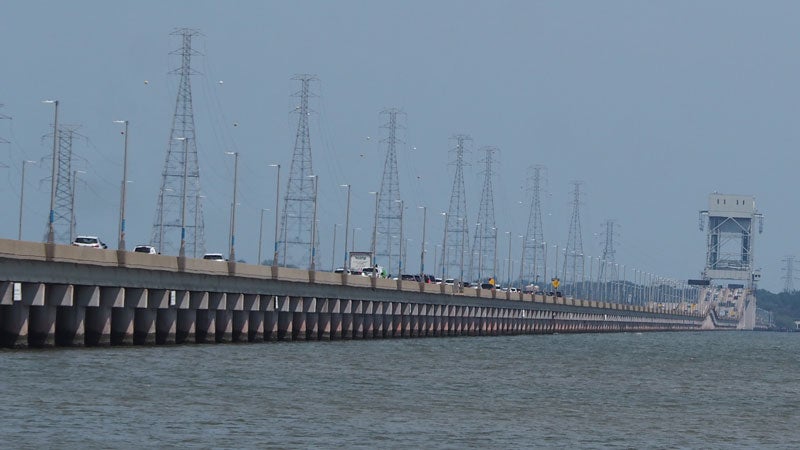IW recycling centers seeing more use
Published 6:27 pm Tuesday, March 9, 2021
Is Smithfield the cause?
Data from Isle of Wight’s Public Works Department suggests an uptick in use of the county’s refuse and recycling centers.
According to Michael Etheridge, the county’s solid waste manager, Isle of Wight’s refuse and recycling centers collected 76 tons of recyclables last month. That’s a roughly 41% increase over the 53.6 tons the county has averaged for February over the previous three years.
But county officials can’t say for certain whether the town of Smithfield’s decision to end curbside recycling in mid-January is responsible.
“Waste is so unpredictable,” Etheridge said. “You never know what’s going to happen day to day, year to year, month to month … It could be weather, it could be the economy; there’s so many things that affect the changes.”
According to Etheridge’s data, the county also saw increases in tonnage at its recycling centers in the months of the 2020-2021 fiscal year that occurred prior to Smithfield ending recycling. But excluding February, the next highest increase was only 33%, which occurred last July when the county collected 84 tons compared to the 63-ton, three-year average for that month.
Historically for February, the county collected 49 tons of recyclables in 2018, 55 tons in 2019 and 57 tons in 2020 — which would seem to indicate the 76 tons collected in February 2021 is indeed higher than the typical year-to-year fluctuations.
But the data reflects totals from all eight refuse and recycling centers located throughout the county. So without a site-by-site breakdown of the increase, there’s no way to tell whether Wrenn’s Mill and Jones Creek — the two closest centers to Smithfield — are the source of the extra tonnage.
Historically, Jones Creek and Wrenn’s Mill account for roughly 48% of the 400,000-plus patrons the county’s eight recycling centers see annually. The county is also forecasting an estimated 912 tons county-wide by the end of the 2020-2021 fiscal year compared to the 750-850 tons its recycling centers typically see annually. And that translates to an added cost for the county.
Currently, the county pays $65 per ton to send off its recyclables, most of which Etheridge said end up going to the Wheelabrator plant in Portsmouth due to “the state of the markets,” where they’re incinerated to produce steam that’s then used to generate electricity. Landfilling 900 tons of recyclables, by comparison, would cost $51,300.
“So it’s waste-to-energy rather than being actually recycled,” Etheridge said.
Smithfield’s Town Council had made the decision to cut recycling from its budget in June 2020, acting on the advice of Town Treasurer Ellen Minga. She had recommended the town end its recycling contract with Bay Disposal and impose a $6.01-per-month trash collection fee on residents as a way of offsetting $300,000, mostly in meals tax revenue, she predicted the town would not receive during the first quarter of the 2020-2021 fiscal year due to the economic impacts of the COVID-19 pandemic. But Town Manager Michael Stallings told The Smithfield Times Jan. 6 — about a week before the town’s final recycling pickup — that meals taxes had actually come in “relatively flat” the first quarter, meaning no surplus, and more importantly, no deficit.
Cutting recycling by itself was supposed to save Smithfield roughly $100,000 a year, according to the town’s Fall 2020 municipal newsletter, which also claimed a shift in world markets had caused the demand for recyclables to dry up, leaving incineration as the only cost-effective option. As such, “most, if not all” of the recyclables the town was collecting were getting incinerated rather than repurposed, it argued. However, Brandon Newsome, a customer service supervisor with Bay, had estimated to the paper on Dec. 17, 2020, that roughly 30% of the recyclables Bay collects throughout Hampton Roads gets incinerated. The remaining 70%, he said, goes to a processing facility.
Even if most of the county’s recyclables end up incinerated rather than repurposed, Etheridge said he still considers the county’s recycling program “a good investment, being that we have all the infrastructure and all the training in place for all our residents.”
“At least that gives us an outlet to get rid of the material … the ultimate goal is for it not to be landfilled,” he said. “Hopefully, in the future as markets develop, we will be able to get back to true recycling of our materials.”
Etheridge expects to see an impact from Smithfield’s decision to end recycling more in the county’s total trash tonnage than the amount of recycling being collected at its centers.
“Before you had two containers, one for recycling and one for garbage,” he said. “Take the one for recycling away, most likely the resident’s going to put everything back into that one container, and then we’ll pay the tipping fee on that material.”
While Smithfield still pays Bay for door-to-door trash pickup, the collected waste, along with the county’s, eventually ends up at the Isle of Wight Transfer Station on Foursquare Road near Smithfield, where Southeastern Public Service Authority trucks haul it to the regional landfill in Suffolk. Isle of Wight County, which is a member of SPSA, pays the associated $57 per ton cost to transport the waste from the station to the landfill, County Administrator Randy Keaton explained.
“If the recyclables are placed in the resident’s waste collection container then the county could potentially see an increase in tipping fees,” Assistant County Administrator Don Robertson said.
“I accounted for the additional waste in our projections to the end of the year, and we accounted for it next year,” Etheridge said. “Some of that could go to recycling … but we do expect the bulk of it to go into the trash.”






